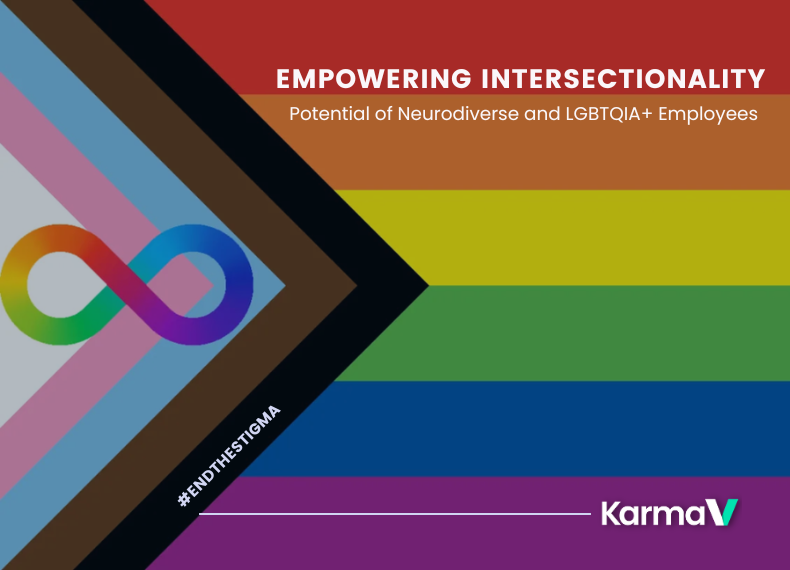
Society increasingly recognizes that our brains function differently, and there is no single 'correct' type of brain. Similarly, we are growing more accepting of the diverse identities encompassed by the LGBTQIA+ (Lesbian, gay, bisexual, transgender, queer, intersex, asexual) spectrum.
Research indicates that neurodivergent people, especially those diagnosed with autism, are more likely to identify as LGBTQIA+ compared to their neurotypical peers.
A 2018 study revealed that one-third of participants reported their gender identity was frequently scrutinized because of their autism. This persistent bias against neurodivergent individuals suggests they lack the capability to understand their own sexual orientation or gender identity, which often leads to the underdiagnosis of neurological conditions within the LGBTQIA+ community.
“Neurodiversity may be every bit as crucial for the human race as biodiversity is for life in general. Who can say what form of wiring will be best at any given moment?”— Harvey Blume, The Atlantic, 1998
However, for the uninitiated, identifying someone at the intersection of neurodiversity and LGBTQIA+ is not about looking for specific markers or signs, as such identifiers can be profoundly personal and vary widely from person to person. Understanding and supporting individuals who identify with both these communities involves recognizing the complexity of their experiences and the diversity within each category. Here’s an approach to better understand and support these individuals:
It’s crucial to approach the intersection of neurodiversity and LGBTQIA+ with empathy, respect, and an openness to learning from the experiences of those who identify with these groups. Rather than trying to identify individuals based on markers, focus on creating an environment where all people feel safe and supported to express their identities and needs.
Supporting employees at the intersection of neurodiversity and LGBTQIA+ identities in the workplace involves a multi-dimensional approach that respects and values the unique experiences and challenges these individuals may face. Organizations can significantly impact by fostering an environment that is not only accepting but also affirming and supportive of all aspects of an individual’s identity.
Develop a clear DEIB policy that outlines company's commitment to fostering a diverse and inclusive workplace. This should include non-discrimination clauses covering all aspects of employment, from hiring to promotions and termination.
Organizations like Google and IBM have set benchmarks by incorporating non-discrimination policies that explicitly include gender identity and expression. This safeguards transgender and gender non-conforming employees from discrimination and harassment, thereby setting a standard for workplace equality.
It is crucial to provide education on neurodiversity and LGBTQIA+ issues. Training should address the unique challenges faced by individuals at this intersection, such as understanding sensory sensitivities or communication preferences that may differ from neurotypical or heterosexual/cisgender norms.
Programs should also combat unconscious bias and promote an understanding of diverse identities and experiences, including awareness on topics such as as cultural competency and anti-harassment.
Recognizing that neurodiverse employees may have specific needs related to their work environment, such as quieter spaces or flexibility in work hours (for some, this might mean starting and ending their workday earlier or later than the typical 9-to-5 schedule), can help accommodate their sensory needs and reduce anxiety or stress. This flexibility is beneficial for all employees but is particularly supportive of those who may struggle with traditional office environments.
Remote work options or modified break schedules allows neurodivergent employees to create a controlled environment that suits their sensory preferences, such as lighting and noise levels. This can reduce sensory overload and improve focus and productivity.
Ensuring access to mental health resources that respect and understand the intersection of neurodiversity and LGBTQIA+ identities is essential. Accommodations might include offering services through providers who specialize in supporting neurodiverse individuals or those who are LGBTQIA+.
Establishing employee resource groups (ERGs) for both neurodiverse and LGBTQIA+ employees provides valuable support networks. These groups can offer a sense of community, peer mentoring, and a platform for voicing concerns and sharing resources.
For tasks or projects that require shifts between different types of work or changes in workflow, providing clear and structured transition plans can help neurodivergent employees adjust more easily
Ensure that neurodiverse LGBTQIA+ employees have equal access to professional development and advancement opportunities. Actively include them in decision-making processes and seek their input in crafting policies that affect their work lives to ensure these measures are genuinely reflective of their needs.
Utilize clear and direct communication that avoids ambiguities, which can be particularly helpful for autistic employees or those with similar neurodiverse conditions. Additionally, providing written instructions along with verbal directives can help in ensuring clarity and understanding.
Leadership should actively participate in and advocate for inclusive practices, setting a tone promoting a diversity and inclusion culture.
Studies indicate that teams incorporating neurodivergent individuals can achieve up to 30% higher productivity compared to those lacking such diversity. The presence of neurodivergent professionals not only enhances productivity but also improves overall team morale.
As businesses face the necessity to revise traditional workforce strategies, the integration of neurodivergent talents presents significant advantages. The unique perspectives and problem-solving skills they bring are critical for innovation and efficiency. Organizations that fail to adapt to this inclusive approach may find themselves at a competitive disadvantage against those that foster a supportive and progressive environment for all employees.
0 Comments
No Comments Found.